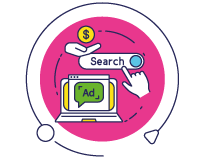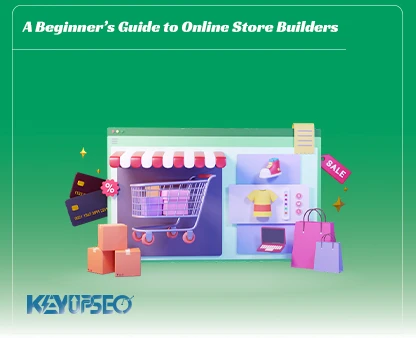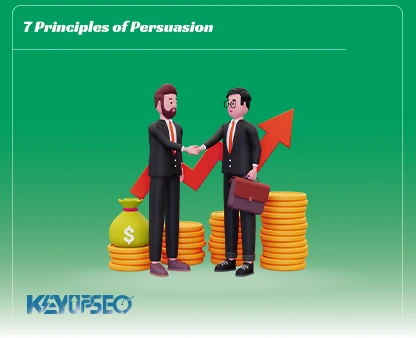
How Stealth Marketing Shapes Your Choices
Stealth marketing subtly influences consumer choices by embedding brand messages into everyday life, often without direct awareness or recognition.
You may instinctively recoil at the very thought of marketing, associating it with intrusive ads and relentless sales tactics. No surprise there, you’re not alone! For years, marketing has carried the reputation of pushy salespeople cornering you just to shower you with praise about their product, ultimately persuading you into a purchase.
But times have changed! Advertising has become so sophisticated and subtle that you may not even realize how or when you started liking a particular brand, or why you ended up choosing a specific product.
Stealth marketing subtly embeds brand messages into everyday life, shaping consumer decisions through unseen psychological triggers and strategic influence.
Read this article from the KeyUpSeo blog, one of the best systems to buy website traffic and improve SEO and Google rankings.
What is Stealth Marketing?
Most advertising techniques are direct; an ad is shown to you, and you consciously acknowledge it! Whether you buy the product or not, the marketing has done its job.
But sometimes, it’s not that obvious.
In stealth marketing, a brand delivers its message without you even realizing it. These subtle influences bypass your conscious awareness, embedding marketing cues into your subconscious so seamlessly that you don’t even recognize them as advertisements.
These hidden messages cross the boundaries of awareness, quietly shaping your behavior. How? Through soft background music, a delicate fragrance, or even the behavior of those around you. It’s that subtle and unexpected!
Have you ever wondered what truly influenced your decision to buy a product? Was it your choice or subtle marketing persuasion? We often rationalize our decisions, but the real reason isn’t always the one we tell ourselves. Perhaps, without realizing it, you’ve absorbed an invisible marketing cue that led to your choice.
Let’s first uncover the origins of these hidden messages and explore where this mysterious strategy began!
The Origins of Stealth Marketing
More than 60 years ago, the controversy surrounding hidden marketing messages began! It all started with James Vicary, a psychologist and marketing researcher, who made a bold claim he said he had conducted an experiment proving that brands could control people's minds through subliminal advertising. According to Vicary, these hidden messages bypass conscious awareness, making consumers powerless against them as they get ingrained in the subconscious.
His infamous experiment took place in a movie theater, where audiences were unknowingly exposed to stealth marketing. Throughout the film, a flashing message appeared for just 10 milliseconds at intervals, reading: “Hungry? Eat popcorn and drink Coca-Cola!” The catch? Viewers couldn’t consciously see it, yet their subconscious minds were absorbing the message!
Human awareness processes images that appear for more than 13 milliseconds, but since these subliminal messages were shown for just 10 milliseconds, they bypassed conscious perception. Vicary claimed that his test on 45,000 moviegoers led to a staggering 18.1% increase in popcorn sales and a 57% rise in Coca-Cola purchases!
The Public Reaction & the Truth Behind the Experiment
The revelation triggered a wave of fear and anxiety. Unsurprisingly, people didn’t want their minds manipulated by brands! Media outlets amplified the panic, turning the supposed experiment into a global controversy.
The chaos escalated so much that Vicary eventually confessed five years later that his entire research was fabricated! His results were completely fake, yet the fear surrounding hidden marketing techniques never faded.
Researchers became obsessed with the mystery of subliminal advertising, launching multiple studies across universities and marketing labs. Despite repeated tests, no significant results were found; none of the experiments proved that subliminal messages had the kind of powerful influence Vicary had claimed.
Yet, the idea of stealth marketing still lingers today, shaping advertising strategies in ways more subtle than ever.
Our suggestion to you is a popular article for users. The article how to make a sitemap is very practical and important and will help you a lot in improving SEO and website growth.
BBC’s Subliminal Advertising Experiment
One of the most well-documented studies on stealth marketing was conducted by the BBC, aiming to test the effects of hidden messages on the human mind. This experiment involved 98 volunteers and bore similarities to James Vicary’s controversial research, but with more controlled variables and a scientific approach.
Dutch researchers had previously suggested that subliminal brand messaging is only effective if the consumer already desires the product, in this case, a drink. To test this theory, participants were split into two groups:
- Group One: Viewed a three-minute video where Lipton briefly appeared every five seconds, flashing for an imperceptible 10 milliseconds.
- Group Two: Watched the same clip but without the hidden Lipton flashes.
At the end of the video, both groups were offered a choice to quench their thirst, water or Lipton tea. The results?
Group One (exposed to subliminal Lipton branding): 54% chose Lipton, while 46% opted for water.
Group Two (without subliminal branding): 61% decided on Lipton, while 39% selected water.
Contrary to expectations, there was no strong evidence that subliminal messaging had any significant impact on consumer choice.
Subliminal Advertising: Myth or Reality?
While studies like BBC’s experiment systematically debunked Vicary’s claims, the idea of hidden advertising influencing consumers remained deeply ingrained. The psychological effect of stealth marketing was still widely debated, leading researchers to continue experimenting in hopes of uncovering concrete evidence.
Multiple follow-up studies were conducted in universities and marketing research centers, exploring whether hidden brand messages could truly alter behavior. Despite extensive testing, none of these experiments produced definitive results, nor did they spark the kind of media frenzy Vicary’s fraudulent research had ignited.
Yet, even today, the perception that subliminal advertising can shape consumer decisions still persists, fueling curiosity and debate around its effectiveness.
Experiment: German or French Beverage?
In 1999, Adrian North and his colleagues conducted a study on consumer behavior, examining how music influences purchasing decisions. They sought to determine whether the type of background music could affect customer preferences when choosing between German and French alcoholic beverages.
To test this, the store alternated between playing German music on some days and French music on others. Customers, unaware of the experiment, entered the store while the music played. When they reached the beverage section, they had to decide between two similarly priced and flavored drinks, one German, one French.
The Surprising Results
The outcome? Customers were more likely to buy German drinks when German music played, and preferred French beverages when French music was on.
What’s more intriguing is that only 6 out of 44 interviewed customers acknowledged that the background music might have influenced their choice. The rest were completely unaware of any impact, insisting their selection was purely personal.
While studies produced both positive and inconclusive results, no research fully confirmed or denied the effectiveness of subliminal messaging, leading brands to continue using hidden marketing techniques in various forms.

Is Stealth Marketing Still Used Today?
Modern marketing is no longer about blinking subliminal messages secretly altering decisions, or is it? While stealth marketing may have evolved, it remains a key strategy for subtle brand promotion.
Let’s revisit its definition: Stealth marketing is a technique where products are advertised discreetly and indirectly, without consumers realizing they're being marketed to. This method guides the audience’s perception, making them feel a natural inclination toward a brand without explicit persuasion.
While some argue it is unethical, claiming it manipulates consumers, others believe that indirect marketing is less intrusive and more effective, striking straight at the emotional core of the audience.
But how do companies apply hidden marketing strategies today? Let’s explore some of the most subtle yet powerful marketing techniques they use!
Different Methods of Stealth Marketing
Stealth marketing employs various hidden strategies to promote products without consumers realizing they’re being influenced. These techniques include celebrity endorsements, fake media coverage, staged controversies, hidden branding in logos and posters, and subtle placement in high-visibility locations. Let’s explore some of these intriguing methods!
-
Celebrity Endorsements
Celebrities wearing specific brands or using certain products serve as indirect brand ambassadors. Even if they never openly promote the product, their popularity makes consumers subconsciously associate the brand with prestige and desirability.
A more fascinating variation of this method is hidden actor marketing, pioneered by Sony Ericsson for its camera phone launch. Have you heard the story of Sony’s fake tourists?
Sony Ericsson’s “Fake Tourist” Campaign
In 2002, Sony Ericsson became the first company to introduce a mobile phone with a built-in digital camera. But how could they showcase its capabilities on a large scale without traditional advertising? They devised one of the most iconic stealth marketing campaigns in history!
Sony hired 60 actors across 10 major cities, posing as tourists. Their mission? To approach strangers near popular landmarks and ask them to take a picture. But instead of handing over a regular camera, they gave unsuspecting passersby the new Sony camera phone!
Naturally, people were intrigued, examining the phone in awe as the actors excitedly demonstrated its features. This clever approach sparked organic conversations, making people discuss their first-hand experience with the innovative device. Word-of-mouth marketing spread rapidly, and the campaign ultimately helped Sony’s camera phone become one of the year’s best-selling devices across multiple countries.
-
Hidden Media: Subtle Influence Through Everyday Stories
Many websites, blogs, and media platforms feature personal experiences and daily stories that appear devoid of marketing intent. Yet, behind the scenes, these stories often serve as stealth marketing tools, subtly influencing consumer perceptions without them realizing it. Your subconscious mind absorbs hidden brand messages, even when there are no obvious advertisements!
Case Study: Walmart’s Hidden Media Strategy
In 2006, a couple named Jim and Laura started a blog detailing their positive and exciting experiences while visiting various Walmart locations across different states. Their adventures gained popularity, and people eagerly followed their stories, unaware that their glowing reviews were part of a strategic marketing campaign.
Eventually, it was revealed that Walmart had financially backed the couple, transforming their seemingly organic content into a covert marketing initiative.
-
Fake Controversies: Viral Publicity with Hidden Intentions
Sometimes, not always, manufactured debates, rumors, and controversies surrounding a brand or product act as stealth marketing strategies, either boosting brand recognition or reviving consumer interest.
A company launches a rumor or sparks a debate, allowing social media to spread it like wildfire, while their marketing team steps back and watches the magic unfold. Such discussions, whether positive or negative, keep the brand at the center of attention, with zero advertising costs!
This tactic has been widely used in various industries, including the famous Starbucks cup controversy in 2015.
Case Study: Starbucks’ Minimalist Holiday Cups
In 2015, Starbucks unveiled its new holiday cups, which featured a plain red design without any festive artwork. This unexpected simplicity led to a wave of criticism, praise, and heated debates.
Suddenly, the cups became a trending topic, dominating social media discussions. While some claimed Starbucks was abandoning holiday traditions, others praised the modern minimalism of the design. But here’s the twist: regardless of the sentiment, everyone was talking about Starbucks.
The result? Massive brand visibility and skyrocketing sales, all thanks to a strategically timed, controversy-driven marketing campaign.
-
Hidden Messages in Advertising & Logos
For some brands, especially tobacco companies, facing advertising restriction’s stealth marketing serves as a crucial tool. It allows them to embed their messages subtly, ensuring they remain visible despite legal limitations.
But beyond regulatory challenges, hidden brand messages can enhance storytelling and evoke emotions, helping companies connect with consumers in unexpected ways. Let’s explore some intriguing examples!
A special offer for SEO professionals: If you're looking for a way to increase SEO clicks on your website, try our powerful optimization tool.
Marlboro & Ferrari: Subliminal Branding in Formula 1
Stealth marketing has been widely used in tobacco advertising, particularly in Formula 1 racing. Marlboro, a leading cigarette brand, prominently displayed its name and logo on race cars, ensuring massive visibility among global audiences.
However, as strict regulations banned tobacco advertising, Marlboro had to find more discreet ways to maintain its presence. Their solution? A barcode-like design on Ferrari’s F1 cars, subtly resembling a cigarette pack, cleverly keeps their brand identity alive without explicitly violating ad restrictions.
Amazon’s Hidden Logo Message
Amazon doesn’t rely on stealth advertising, but its logo carries a subtle hidden message that many people might overlook.
The orange arrow underneath the “Amazon” text isn’t just a design choice—it connects the letter “A” to “Z”, symbolizing Amazon’s promise to offer everything “from A to Z.” This is a simple, yet effective branding technique conveys a powerful subliminal message, reinforcing the idea that Amazon is the ultimate one-stop shop for consumers.
Coca-Cola vs. Pepsi: A Playful Marketing Rivalry
This example isn’t entirely hidden, but the depth of its messaging reflects stealth marketing principles.
The long-standing rivalry between Coca-Cola and Pepsi is legendary, and one specific ad campaign added a unique twist to their competitive dynamic.
Pepsi released a Halloween-themed ad, featuring a can wearing a Coca-Cola cape, with the message: “Wishing you a scary Halloween!” This clever visual not only played into the festive season but also mocked Coca-Cola, framing it as a fearsome entity.
But Coca-Cola’s response was even sharper. They took the same image, altered the message, and brilliantly reframed the cape as a hero’s cloak, stating: “Everyone wants to be a hero.”
Without directly selling anything, both brands managed to trigger strong emotional reactions, keeping their rivalry alive while entertaining audiences worldwide.

-
Product Placement: Hidden Advertising in Plain Sight
At first glance, viewers watching a movie or TV show might not immediately recognize stealth marketing. But upon closer inspection, brands subtly embed themselves into scenes, influencing audiences without explicit advertising.
Imagine a family gathered around the table, sipping coffee, discussing a job interview. You’re fully immersed in the plot, unaware that the recognizable coffee brand sits on the table, its packaging visible. The Samsung refrigerator in the background and the Adidas sneakers worn by the main actor? These elements aren’t coincidences; they’re silent brand endorsements, seamlessly integrated into the story.
Samsung & the 2014 Oscars: The Unplanned Selfie That Wasn’t?
Stealth marketing isn’t always about hidden symbols in logos or cryptic messaging in banners. Sometimes, a product is simply present in the background, influencing viewers without direct acknowledgment. This strategy unfolds when a particular brand frequently appears in TV shows or films, subtly cementing itself in the audience’s subconscious.
Samsung took this approach one step further during the 2014 Academy Awards. The event became an unexpected marketing goldmine after Ellen DeGeneres’ viral selfie featuring Hollywood’s biggest stars. While Samsung was an official sponsor, the brand insisted it had no involvement in staging the selfie.
However, the selfie, taken with a Samsung phone, dominated the internet, driving massive exposure for the company. Whether planned or spontaneous, Samsung’s presence at the moment ensured widespread brand recognition.
FedEx & Cast Away: Survival Meets Branding
Have you ever watched Cast Away (2000)? The film follows a FedEx employee stranded on a deserted island for four years after a plane crash.
FedEx plays a crucial role throughout the movie, not just as a backdrop but as an essential part of the survival story. The protagonist relies on FedEx packages to stay alive, and a letter ultimately changes his destiny, all subtly reinforcing the company’s reliability and global reach.
The hidden message? “No matter rain, storms, or even being stranded on an island, FedEx will always deliver.”
Hidden or Obvious? The Lasting Power of Stealth Marketing
As you’ve seen, stealth marketing remains a key advertising strategy, evolving in creative ways to subtly influence consumer perception. Whether through product placements, viral moments, or embedded brand narratives, these techniques increase brand loyalty and sales without traditional advertising methods.
And rest assured, stealth marketing isn’t going anywhere; it’s only growing stronger.
You can also use tools like Google Analytics or Hotjar to monitor user behavior and use the right strategy to attract them. We have fully taught you how to use this tool in the article What is Hotjar.
Release date : 26 June, 2025













